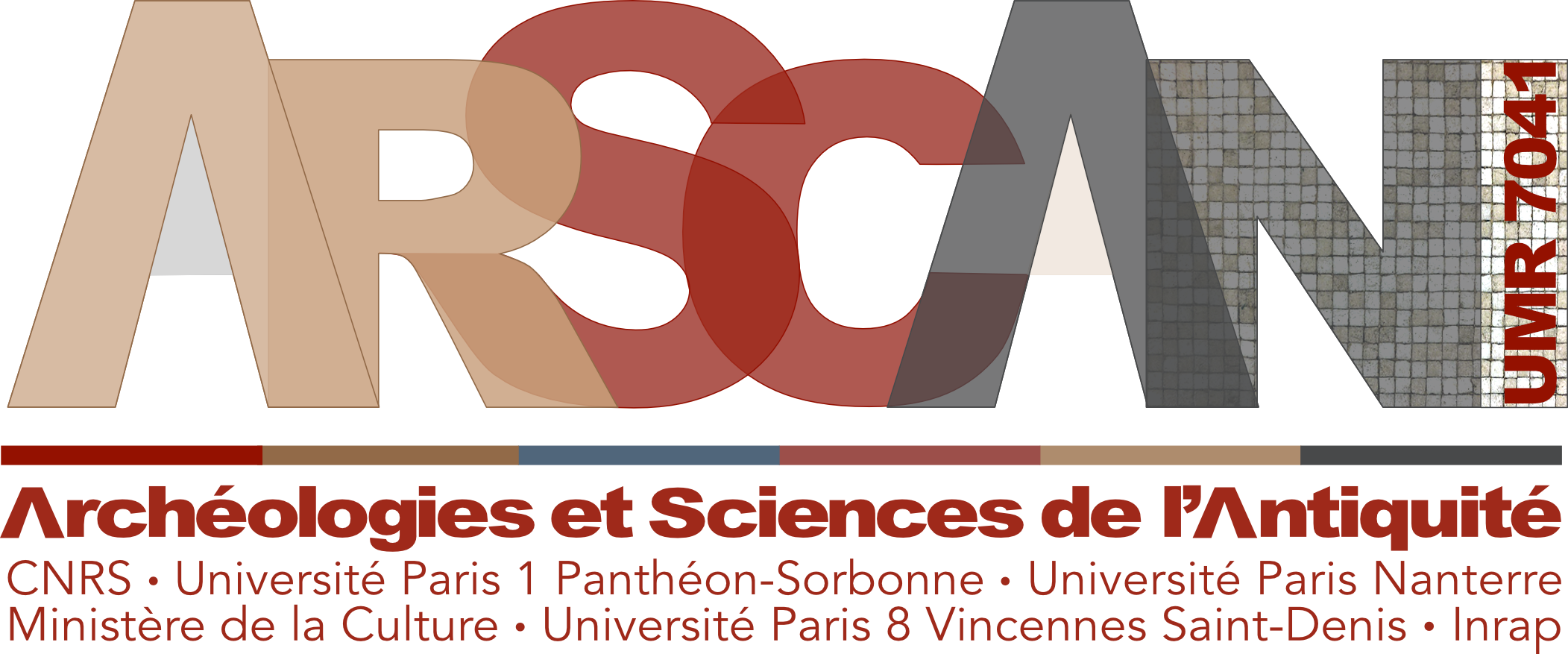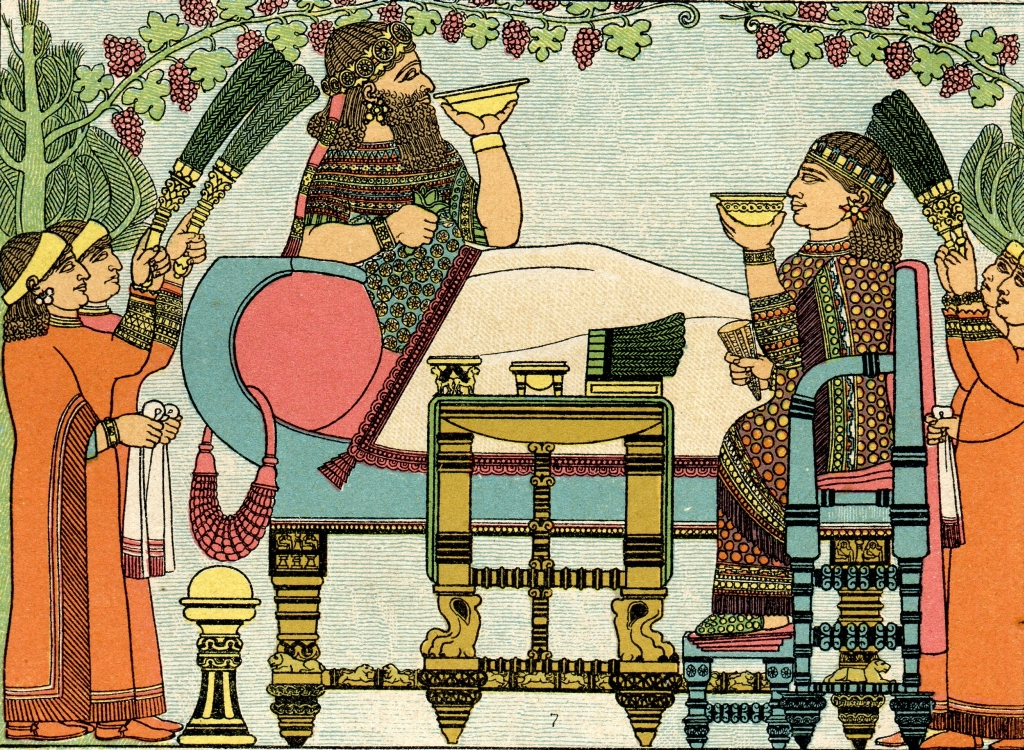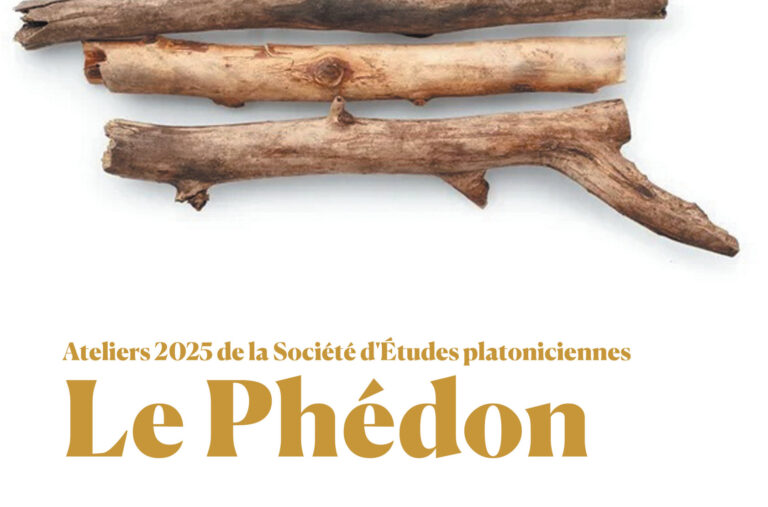Textiles & Gender: Production to wardrobe from the Orient to the Mediterranean in Antiquity
Colloque 4-6 Octobre 2018
Salle des Conférences, Bâtiment Pierre Grappin, Université Paris Nanterre
Organisé par Mary Harlow et Cécile Michel
An International conference
organised by Mary Harlow and Cécile Michel Secretary: Louise Quillien
GDRI Ancient Textiles from the Orient to the Mediterranean (ATOM)
Textiles and gender intertwine on many levels, from the transformation of raw materials into fabric at one end, to dress and garments, and the construction of identity at the other.
Textile production in antiquity has often been considered to follow a linear trajectory from a domestic (female) activity to more ‘commercial’ or ‘industrial’ male-centred mode of production. In reality, many modes of production probably co-existed and the making of textiles is not so easily grafted onto the labour of one sex or the other. Some elements of the chaîne operatoire have been assigned to either men or women. It is rare, for instance, to find a culture where men did the spinning –there is however an attestation of this in the South of Iraq – and at the other end of the process, equally rare to find female fullers. At times and in some places, weaving was women’s work, but in other times and places it was the prerogative of men. Labour organization depends on who learns what, where, and how. Children of both sexes could be involved in some parts of the textile chaîne opératoire at home with their mother or father (fibre preparation, spinning or weaving), or adults could learn with someone who is already qualified. Learning involves also cognitive aspects. We would like to understand these process across Antiquity in the different cultures that are encompassed by our period. The production of textiles can indeed inform us of the relationships between gender, labour, economics and, in some cases, the potential for the prosperity of a family.
In other areas of life textiles transformed into garments express the gender of the wearer. Dress and gender are intimately linked in the visual and textual records of antiquity; it is common practice in both art and literature to use particular garments to characterise one sex or the other, and to undermine literary characterisations by suggesting that they display features usually associated with the opposite gender. Despite the fact that clothing shapes were simple (tunics and rectangular or curved-edge mantles) for both women and men, each sex looked very different. This difference was socially and culturally important and expressed in the type of textile used, the length of the tunic, the manner in which it was decorated or undecorated, belted or unbelted, use of colour and most fundamentally in the manner of draping or fastening. Body language was also defined by clothing and socially prescribed gendered roles. A person should have no doubt as to the sex of another person he or she might meet and cross-dressing or dressing in a manner perceived to be ‘manly’ (if a woman) or ‘effeminately’ (if a man) implied an insult and an inability to act in the proper culturally defined gendered way. As, despite their shared shaping, male and female clothing had to be demonstrably different, from the outset spinners and weavers were making choices about the type of wool and weave required – and we might add dyers into the mix. This puts gender at the very basis of textile work from the outset to the end product. Gender divisions were fundamental to ancient society (although they did not work in the same way in every culture) and their expression in textiles and clothing equally fundamental. The human race is hard wired for adornment thus even among the poorest classes the opportunity for some personalised and decorative aspect has to be taken into account.
The conference will examine the gender division of work in the production of textiles, as well as attitudes to dress and gender across the Near East and Mediterranean culture in antiquity (c. 3000 BCE-300CE), tracing both cross-cultural and culturally specific associations.
This conference is the concluding meeting of the GDRI ATOM and a follow up event of the international research seminar on Gender and textiles which took place in Nanterre during the first semester of 2015 within the frame of the Séminaire d’Histoire et Archéologie de l’Orient Ancien (SHAMO) and the international workshop organised at the University of Leicester in April 2017 on “Textiles, Dress and Gender in the Ancient World.”
Contacts: Cécile Michel; Mary Harlow; Louise Quillien
Programme
Thursday, October 4
Morning
9h30-9h45 Registration
9h45-10h00 Welcome and introduction
Gender and Textile Production
10h00-10h30
Agata Ulanowska, University of Warsaw
Towards engendering textile production in Middle Bronze Age Crete
10h30-11h00
Hedvig Landenius Enegren, University of Uppsala
Women, men, girls and boys- gendered textile work at Late Bronze Age Knossos
11h00-11h30 Coffee break
11h30-12h00
Damien Agut, CNRS, ArScAn-HAROC, Nanterre
A man’s business? Washing the clothes in Ancient Egypt (2nd and 1st millennium BC)
12h00-12h30
Beate Wagner-Hasel, Universität Hannover
Female dues and the production of textiles in ancient Greece
12h30-14h00 Lunch break
Afternoon
14h00-14h30
Lin Foxhall, University of Liverpool
Women’s work: the gendered practice, behaviors and identities of textile manufacture in ancient Greek and Italic communities
14h30-15h00
Magdalena Ohrman, University of Wales and CTR
Work gendering space? Roman gender, Textile work, and Time in shared domestic spaces
15h00-15h30
Lena Larsson Lovén, University of Gothenburg
Textiles, femininity and masculinity in Roman society
15h30-16h00 Coffee break
16h00-16h30
Sophie Desrosiers, EHESS, Centre de Recherche Historiques, Paris
The sense of weaving: cloth, garments and gender in the Central Andes
Gendered garments and accessories in the Ancient Near East
16h30-17h00
Barbara Couturaud, Institut Français du Proche-Orient, Erbil
Looking for women. A visual investigation on feminine garments in ancient Mesopotamia during the Early Bronze Age
20h00 Conference dinner
Friday, October 5
Morning
10h00-10h30
Louise Quillien, Université Paris 1 Panthéon-Sorbonne, Paris
The gender of garments in 1st millennium BC Babylonia, an inquiry through texts and iconography
10h30-11h00
Philippe Abrahami, Université de Lille, and Brigitte Lion, Université Paris 1 Panthéon-Sorbonne
The gender of clothes in the Late Bronze Age
11h00-11h30 Coffee break
11h30-12h00
Valérie Matoïan, CNRS, Proclac, Paris, and Juan Pablo Vita, CSIC, Madrid
Textiles and gender in Ugarit
12h00-12h30
Cécile Michel, CNRS, ArScAn-HAROC, Nanterre
Belts and pins as gendered elements of clothing in 3rd and 2nd millennia Mesopotamia
12h30-14h00 Lunch break
Garments for gods and goddesses, garments of the dead and of statues
Afternoon
14h00-14h30
Maria Giovanna Biga, Università La Sapienza, Roma
Textiles and gender in the Syrian society of the 3rd millennium BC according to the Ebla texts
14h30-15h00
Anne-Caroline Rendu Loisel, Université de Strasbourg
“I made you put on garments, I made you dress in linen.” Goddesses, gods and garments in Sumerian literature
15h00-15h30
Francis Joannès, Université Paris 1 Panthéon-Sorbonne, Paris
The goddess Nanaia’s new clothes
15h30-16h00 Coffee break
16h00-16h30
Cecilie Brøns, Ny Carlsberg Glyptotek, Copenhagen
Gender, dress and colour: female garments in ancient Greco-Roman art
16h30-17h00
Mary Harlow, University of Leicester
White men and rainbow women: gendered colour coding in Roman dress
20h00 Conference dinner
Saturday, October 6
Gendered garments in the Greco-Roman world
Morning
10h00-10h30
Catherine Breniquet, Université Clermont-Auvergne, Marie Bèche-Wittmann, Christine Bouilloc, Camille Gaumat, Musée Bargoin, Clermont Métropole, Clermont-Ferrand
Garments for potters? Textiles, gender and funerary practices at Les Martres-de-Veyre, France (Roman period)
10h30-11h00
Nikki K. Rollason, University of Leicester
Climate change and male clothing in the Later Roman Empire
11h00-11h30 Coffee break
11h30-12h00
Amy Place, University of Leicester
Female ‘Fashion’ in the early North African Church
12h00-12h30
Eva Andersson Strand, Copenhagen University, Textile for Textile Research, Copenhagen
Concluding remarks
12h30-14h00 Lunch




